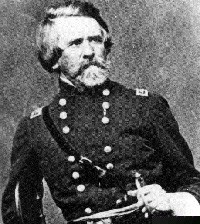

Charge to the Sons of Confederate Veterans:
"To you, Sons of Confederate Veterans, we submit the vindication of the Cause for which we fought; to your strength will be given the defense of the Confederate soldier's good name, the guardianship of his history, the emulation of his virtues, the perpetuation of those principles he loved and which made him glorious and which you also cherish. Remember, it is your duty to see that the true history of the South is presented to future generations."
Lieutenant
General Stephen Dill Lee
Commander General, United Confederate Veterans
New Orleans, Louisiana, 1906
![]()
![]()
Songs
![]() "March of the Sons of Confederate Veterans",
arrangement and lyrics by James F. Chumbley.
"March of the Sons of Confederate Veterans",
arrangement and lyrics by James F. Chumbley.
![]() "Dixie"
"Dixie"
![]() "Bonnie
Blue Flag"
"Bonnie
Blue Flag"
What is the "Sons of Confederate Veterans"?
The South Carolina Life Endowment
| Division Events | |
| Camp Events |
|
| Other Events |
Saturday, 29 September 2001 Dwayne Black and Katie Sease are announcing
their intentions to marry. Photo taken at Battle of Aiken 2001 |
Pine Grove
School, Saluda County, South Carolina
Built in the 1890's to
serve the community. The old school building is being repaired and renovated by
the camp for a meeting hall (if you
would like to help contact the camp or the officers via e-mail).
It is located on Highway 39 at Pine Grove Road between Saluda and
Ridge Spring, South Carolina. Our regular meetings are
held every third Tuesday of the month at 7:00 pm. Feel free to stop by and join us.
Pine Grove School
Sons of Confederate Veterans Camp #48 was chartered in October 1897 and re-chartered in April 1997 at "Winehall" in Saluda County, South Carolina. "Winehall" is the birthplace of James Butler Bonham, hero of the Alamo and a home of his brother, Brigadier General Milledge L. Bonham.
| Office | Name | |
| Commander | Mickey Matthews | msbbmathews@pbtcomm.net |
|
Lt. Commander |
Robert Adams | |
| 1st Lt. Commander | Artie Rodgers | |
| Adjutant & Treasurer | Andrew Coleman | |
| Color Sergeant | Ben W. Forrest | |
| Quartermaster | Tommy Steele | |
| Historian | William Samuel Taylor, Sr. | wstaylor509@yahoo.com |
| Chaplain | Rev. Burton Campbell | |
| Surgeon | ||
| Past Commander | Dwayne Black | confederatedwayne@yahoo.com |
| Web Master | Jeffery J. Sease | deszeldgolos@logicsouth.com |
|
Camp E-Mail: mlbonham@yahoo.com |
||
 Milledge Luke Bonham (1813 - 1890)
- Milledge L. Bonham was born on 25 December 1813 in Edgefield
District, South Carolina (present day Saluda County). He died on
27 August 1890 in White Sulphur Springs, North Carolina [He is buried in Elmwood
Cemetery in Columbia, South Carolina]. Although
not a West Pointer, South Carolina lawyer Milledge Bonham did
have some military experience commanding a company of volunteers
in the Seminole War and a regular regiment in Mexico. After
serving in the U.S. House of Representatives from 1857-60, Bonham
was sent to Mississippi by the state legislature to obtain the
cooperation of that state in the secession winter of 1860-61. As
a major general of state volunteers, from February 1861, Bonham
was placed in charge of Morris Island in Charleston Harbor on 15
April 1861, two days after the fall of Fort Sumter. Going to
Virginia in May 1861, Bonham superseded Colonel Cocke in command
of the Alexandria Line and was in general command of the area
when the fight at Fairfax Court House took place. Superseded
after 10 days by General Beauregard, he commanded his brigade at
1st Manassas (a.k.a. 1st Bull Run) and
until 29 January 1862, when, slighted over seniority matters, he
resigned. Bonham won a seat in the Confederate House where he
served on the Ways and Means Committee, then resigned on 17
January 1863, to become governor of his state. He served in that
office for two years, until reappointed Brigadier General, on 16
February 1865. He commanded a cavalry brigade under Johnston in
the Carolinas Campaign. After the surrender he resumed the life
of a lawyer and planter.
Milledge Luke Bonham (1813 - 1890)
- Milledge L. Bonham was born on 25 December 1813 in Edgefield
District, South Carolina (present day Saluda County). He died on
27 August 1890 in White Sulphur Springs, North Carolina [He is buried in Elmwood
Cemetery in Columbia, South Carolina]. Although
not a West Pointer, South Carolina lawyer Milledge Bonham did
have some military experience commanding a company of volunteers
in the Seminole War and a regular regiment in Mexico. After
serving in the U.S. House of Representatives from 1857-60, Bonham
was sent to Mississippi by the state legislature to obtain the
cooperation of that state in the secession winter of 1860-61. As
a major general of state volunteers, from February 1861, Bonham
was placed in charge of Morris Island in Charleston Harbor on 15
April 1861, two days after the fall of Fort Sumter. Going to
Virginia in May 1861, Bonham superseded Colonel Cocke in command
of the Alexandria Line and was in general command of the area
when the fight at Fairfax Court House took place. Superseded
after 10 days by General Beauregard, he commanded his brigade at
1st Manassas (a.k.a. 1st Bull Run) and
until 29 January 1862, when, slighted over seniority matters, he
resigned. Bonham won a seat in the Confederate House where he
served on the Ways and Means Committee, then resigned on 17
January 1863, to become governor of his state. He served in that
office for two years, until reappointed Brigadier General, on 16
February 1865. He commanded a cavalry brigade under Johnston in
the Carolinas Campaign. After the surrender he resumed the life
of a lawyer and planter.
Douglas S. Freeman, Lee's
Lieutenants
Stewart Sifakis, Who was who in the Civil War
Confederate Military History Vol. 5, pg. 377
![]()
Last Update: 21 June 2001